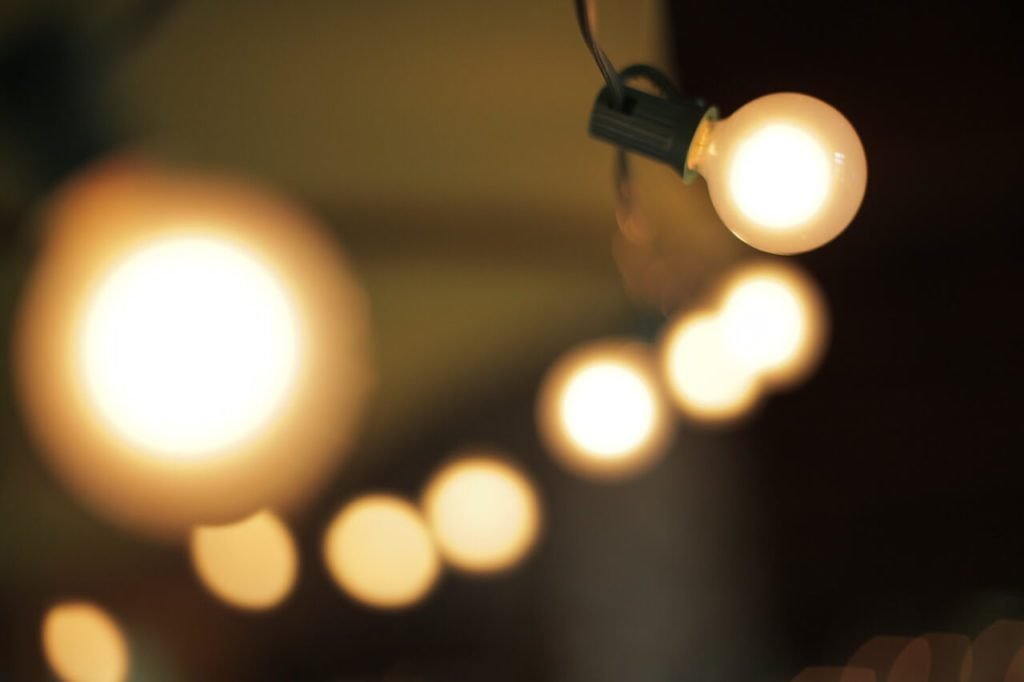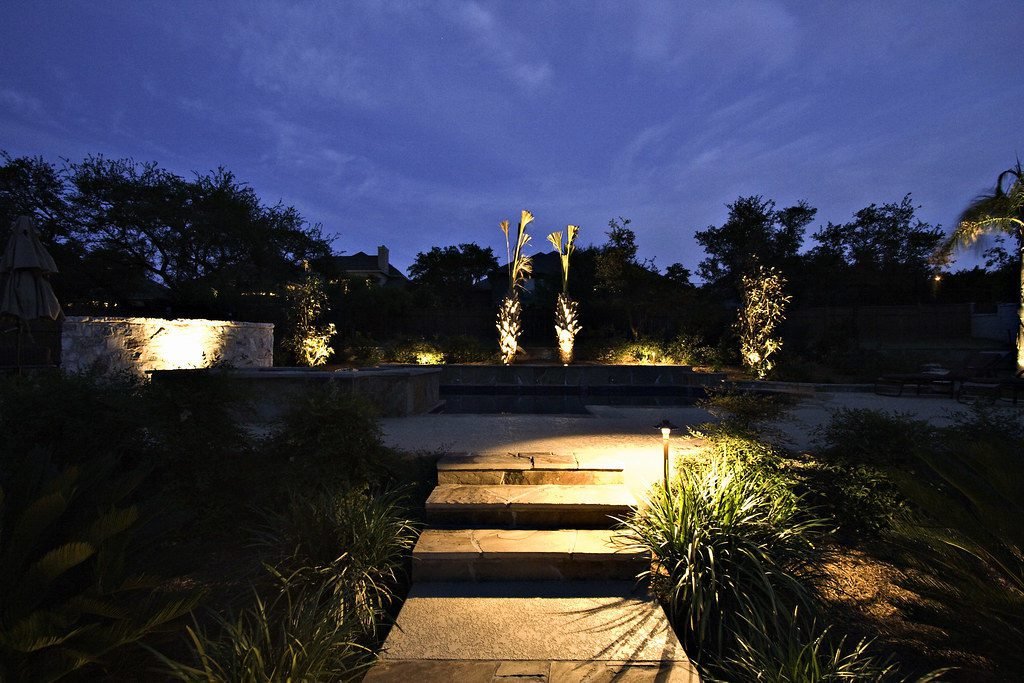Enjoying your outdoor kitchen means you’ll be adding a lot of great elements to the area. Of course, everything starts with your cooking surface, whether it’s only a grill or also includes a stove. But it doesn’t end there – you can add a refrigerator, table and chairs, and much more. But you’re going to need to see it all to enjoy it even more, so don’t forget to plan the lighting as well!
Odds are that you’re going to want to use your space not only during daylight hours. Even at dusk, you’ll find extra lighting helpful. You may want to create a comfortable, relaxed area for eating. Or you could be looking to illuminate your prep and cooking areas. Choosing the right types of lights is a key part of getting the most out of your area.
Setting The Mood
We’re pretty sure that you decided to add an outdoor kitchen because you know the relaxation it can provide. While you may enjoy the actual “cooking” part of the kitchen, we suspect that eating and relaxing with your family and friends is the real goal.
Creating the right atmosphere is almost as important as enjoying your culinary masterpieces. And that includes the light that you add to the kitchen.
During the daytime, you most often won’t need electric lights. Instead, you’ll be looking for ways to provide shade except on gloomy days!
However, there’s no reason to stop using this wonderful room just because the sun isn’t out. By adding the right kind of lighting, you can have a pleasant environment to enjoy the meal and the company.
For the dining area of your outdoor kitchen, you’ll likely want soft lights to help preserve the relaxing environment. You don’t want it to look like an office, after all. Subdued lighting goes best. Fortunately, there are a lot of options to achieve this.
The lighting for an outdoor bar area could be totally different. There are so many types of bars, from neighborhood pubs to sports bars to cocktail bars and many more. There are just as many lighting options to create the mood.
String lights are one great option. Whether you have a roof on your outdoor kitchen or simply posts around the edges, they’re easy to hang. They offer a soft light that’s not centralized.

Another option would be a ceiling fan with a light. This can help keep you cool when it still feels too hot and humid after dusk.
Floor lamps or table lamps could be another option. Spaced correctly around the edge of the room, they can provide the perfect amount of light. And of course, it’s easy to choose where you need light by simply choosing which ones to turn on.
Don’t Forget to Add Good Work Lighting, Too
Of course, the dining area isn’t the only space that needs light. You’ll need to be able to see what you’re cooking to know how it’s coming along. You’ll also probably be doing some or all of the prep work on your counters here.
The intensity of light should be different in this part of the room, though. It’s not about creating a relaxing feeling. Instead, it’s about being able to see what you’re doing. You need light to make sure you’re not burning the steak – and to make sure you’re not chopping off your fingertips.
You do want bright lights, but you also have to keep in mind that they’ll be hung over a grill which generates its own intense heat. That means you want something that’s resistant. Halogen lights fit the bill well, and small ones should be sufficient for what you need. They also generate less heat than traditional incandescent bulbs.
If you have cabinets above your counters, you might opt to add LED strip lights underneath to provide light for your work area. Small fluorescents fixtures may work as well, but seem to be fading from existence.
Light The Path
One last element of lighting to consider is for the path to your outdoor kitchen. Here, too, there are a lot of options.
Extending string lights along the way can offer a wonderful look. Depending on the intensity of the lights, you might have a single string or a pair of strings that begin with your back door and are hung right up to the edge of the kitchen area. Depending on how far that is, you might need to attach them to a tree or add a post.

A traditional light next to the back door may provide enough light as well. The variety of fixtures for these lights can make them attractive. However, they’re generally designed more for security and being able to see what’s near the door, so they do tend to be rather bright. Choosing a lower-wattage bulb can help make it less intrusive, but of course, it still has to light up the area.
We also love the pathway lighting options that are available. Solar-powered lights should have recharged enough during the day to provide enough light to guide your steps. Taller pillar lights also work great without polluting your yard with too much brightness.
Do-it-yourself vs. Professional Installation
When you’ve made your choice about what types of light will work best, it’s time to add them to your kitchen. The next question is: do you do it yourself, or do you hire someone?
The answer really depends on what you need done and your own familiarity with electrical work.
If you had your kitchen designed with suitable electrical outlets and you only need to plug in some lamps, obviously you don’t need outside help. The same can be said for most types of string lights unless you find some that would be hardwired.
However, if you need to have wiring done, it’s best to leave it to a professional. While it may seem simple to run an extra line, you’re still dealing with dangerous current. This is even truer since you are working outdoors and the work has to take humidity – and rain – into account. You might even have to consider bugs or animals that might be prone to chew on exposed wire.
You might also want to consider adding a circuit breaker dedicated to just this space.
In most cases, hiring an electrical contractor is the right way to go. It will help guarantee that the work is done up to par, especially considering the extra care needed for outdoor work. Also, they should make sure you stay on the right side of the law and have all the correct permits in place.
Conclusion
See everything in the right light in your outdoor kitchen by adding the right lighting and fixtures. You can achieve a suitable environment for the dining area with soft lights. On the other hand, the cooking area might need brighter light so you can see what you’re doing. There are so many styles and fixtures available that you’ll definitely find a lot of options that fit your tastes and needs.









